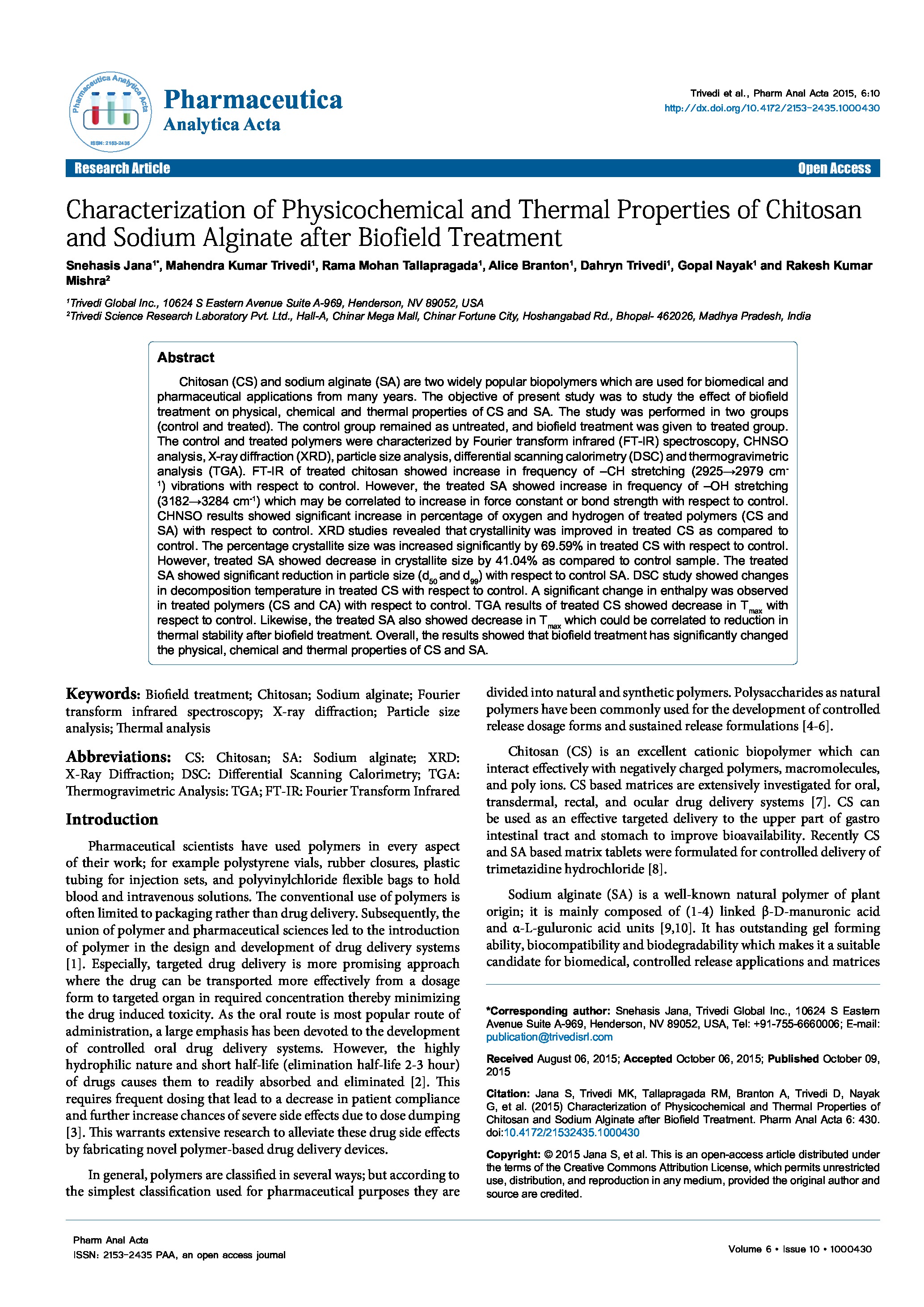Characterization of Physicochemical and Thermal Properties of Chitosan And Sodium Alginate after Biofield Treatment
Affiliation
Trivedi Global Inc.; Trivedi Science Research Laboratory Pvt. Ltd.
Main category
Natural Sciences (Analytical Chemistry, Method Development (Chemistr)
Abstract
Chitosan (CS) and sodium alginate (SA) are two widely popular biopolymers which are used for biomedical and pharmaceutical applications from many years. The objective of present study was to study the effect of biofield treatment on physical, chemical and thermal properties of CS and SA. The study was performed in two groups (control and treated). The control group remained as untreated, and biofield treatment was given to treated group. The control and treated polymers were characterized by Fourier transform infrared (FT-IR) spectroscopy, CHNSO analysis, X-ray diffraction (XRD), particle size analysis, differential scanning calorimetry (DSC) and thermogravimetric analysis (TGA). FT-IR of treated chitosan showed increase in frequency of –CH stretching (2925→2979 cm-1) vibrations with respect to control. However, the treated SA showed increase in frequency of –OH stretching (3182→3284 cm-1) which may be correlated to increase in force constant or bond strength with respect to control. CHNSO results showed significant increase in percentage of oxygen and hydrogen of treated polymers (CS and SA) with respect to control. XRD studies revealed that crystallinity was improved in treated CS as compared to control. The percentage crystallite size was increased significantly by 69.59% in treated CS with respect to control. However, treated SA showed decrease in crystallite size by 41.04% as compared to control sample. The treated SA showed significant reduction in particle size (d50 and d99) with respect to control SA. DSC study showed changes in decomposition temperature in treated CS with respect to control. A significant change in enthalpy was observed in treated polymers (CS and CA) with respect to control. TGA results of treated CS showed decrease in Tmax with respect to control. Likewise, the treated SA also showed decrease in Tmax which could be correlated to reduction in thermal stability after biofield treatment. Overall, the results showed that biofield treatment has significantly changed the physical, chemical and thermal properties of CS and SA.
DOI
10.18147/smn.2016/paper:374
Do you have problems viewing the pdf-file? Download paper
here
If the paper contains inappropriate content, please
report the paper. You will be redirected to the landing page.
